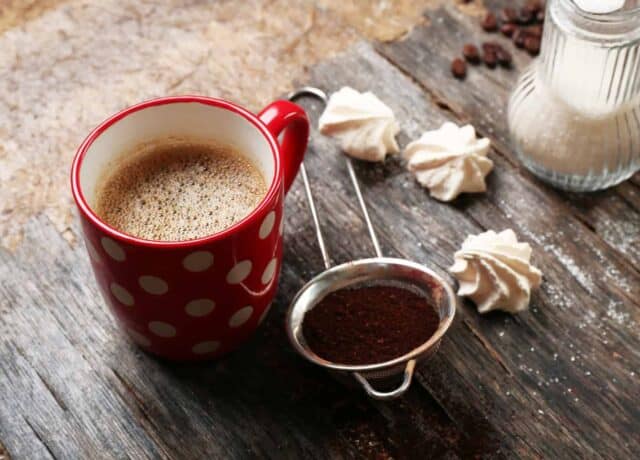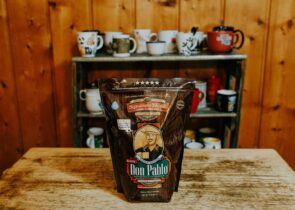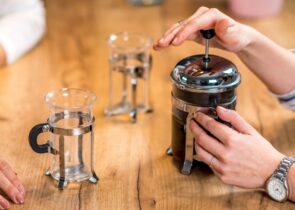The most devoted coffee enthusiasts know which of the many coffee grind sizes you need to use for each brewing method. But unfortunately, very few are taking a deep dive into each specific coffee granule size, like coarse, for example.
That’s where we come in! We’re going to discuss coarse ground coffee, necessary for two of the most popular brewing methods out there (cold brew and French press), in great detail, covering everything from how and why it brews differently to where you can find the perfect grind.
So, what are you waiting for? Read on to find out all you need to know about the coarse coffee experience!
At a Glance: Best Coarse Ground Coffee
Does Grind Size Matter?
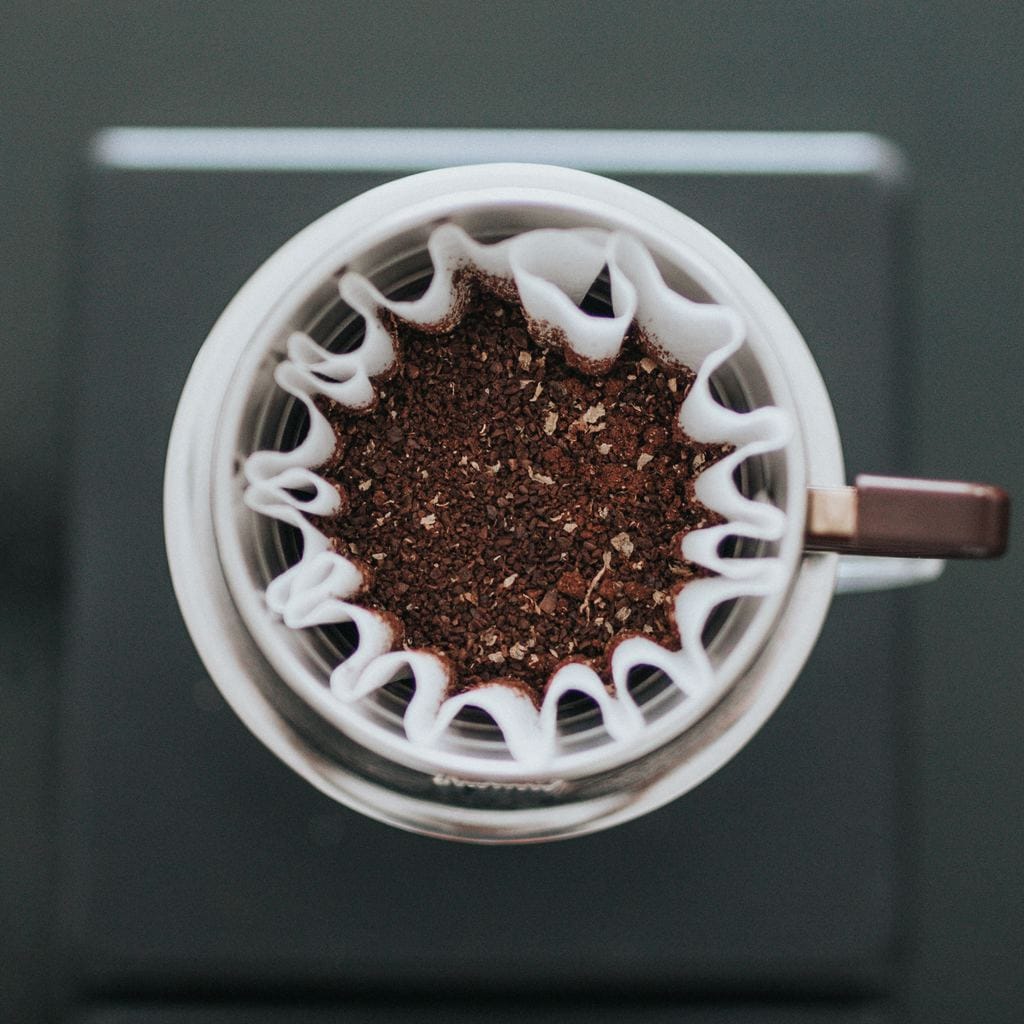
Okay, coffee lovers, let’s start with one of the most basic facts: when it comes to your coffee grind, size matters, and it affects the outcome of your brew. Sure, you may be able to get away with making substitutions, like using slightly finer coffee grounds in place of coarse joe, but will it be easy? Probably not. Will the results taste as good? Also, no. Just make your life easier and use the correct grind size in the first place!
Oh, and a quick disclaimer: when we say “correct grind,” we refer to a size range, not one precise size. Otherwise, grinders would only have six settings, and even the most basic, good but not great, decent coffee grinders on the market today have about 16!
All that to say, though we’re talking about coarse coffee, there’s still a little room for experimentation, but not so much that you’re grinding your beans to a fine powder when you should use the sea salt-sized granules of coarser coffee.
Back to the main point: grind size matters. Why? Because the surface area of the ground joe granules impacts coffee extraction!
Suppose you’re using finer grounds in a brewing mechanism that requires coarse beans. In that case, your coffee machine will extract the brew too quickly because of the increased overall surface area and the smaller surface area per granule. The result is over-extracted bitter coffee, and in some cases, a gross and clogged coffee brewer.
Alternatively, if you use coarse coffee grounds in, say, a semi-automatic espresso machine that requires an exceptionally even, fine grind, you’ll end up brewing a cup of coffee that’s under-extracted, weak, and flavorless. Nasty.
Coarse vs. Fine
As we mentioned before, there are plenty of grind sizes out there, but for the sake of keeping things simple, we’re only going to compare coarse and fine joe. (If you want a full grind size rundown, though, check out our coffee grind size chart here.)
To give you a visual of what we’re talking about, you should know that coarser ground coffee has more color variation than a fine grind. You’ll be able to see individual, chunky bits of the coffee bean in bags of coarse joe, and you can grab or easily distinguish different granules.
However, finer coffee ground particles will have a much smoother texture in your hand. Depending on the joe’s exact size, it can be anywhere from difficult to impossible to pick up, separate, or even distinguish individual granules.
Why Use Coarse Grind?
Using a coarse grind is great for a slow extraction time. And though you can use it in automatic coffee makers, any type of immersion-style brewer handles this joe best. Let’s take a closer look at two of the most popular coarse coffee brewing methods: the French press and cold brewing.
French Press
Let’s start with the French press. If you’re not a coffee connoisseur who frequently uses a press, we’ll quickly break the brewing process down for you:
- The barista places coffee grounds in a chamber (usually made of glass) and pours hot water over them.
- The barista then puts the French press’s lid on top of the chamber before leaving the water and grounds to interact and steep, creating the coffee brew.
- Once a few minutes have passed and the strong coffee has steeped, the brewer uses the French press’s built-in plunger (typically stainless steel) to press the coarse grounds to the bottom of the chamber and filter all of the grit out of your joe.
Now, there are a couple of reasons why we and coffee experts everywhere recommend using a coarse grind for brewing French press coffees. The first and perhaps most important one is what we mentioned earlier about steeping and slow extraction times. The larger surface area per granule and lower overall surface area for coffee to water contact mean it takes longer for the water to extract all the flavor from the grounds. Since French presses need a few minutes to steep, coarse grounds are ideal here.
Plus, coarse coffee grounds are large enough to be filtered out of this brewing method; since it doesn’t use paper filters, tinier grounds could easily make it through the plunger and into your cup. Yuck!
Cold Brew
Another popular brewing method for coarse coffee users is immersion-style cold brewing. There are a couple of different tools that you can use to make this brew, including the above-described French press, but all of them hold cold or room temperature water in a large chamber with your grounds.
Because the cold brew steeping process is long — much longer than the French press, often taking anywhere from 12 to 24 hours — you need coarse grounds for optimum extraction. Once this steeping period is over, use some kind of filter — like cheesecloth, a metal mesh filter, or the more common paper filter — to strain the grounds out of the joe.
Coarse grounds are crucial here, as a finer grind leads to over-extraction and may leave extra grit in your cup.
More Coarse Coffee Brewing Methods
We’ve covered the two most common coarse coffee brewing methods, but just for giggles, let’s address two less common ways, too.
Percolator
If you’re making percolator coffee, medium-coarse or coarse coffee grounds are a must since water will filter through them multiple times. If you use smaller grinds of coffee in your percolator, you risk over-extraction and producing some harsh bitterness.
Cowboy Coffee
Now, this method is a little more old-school and a bit grittier — literally! — but it’s an excellent way to get extra-strong coffee on a camping trip or if your regular brewing tools are out of commission. When you make cowboy coffee, the coffee grounds steep in hot water while in your mug or pot, and instead of filtering them out, you let them sink to the bottom of your vessel. You sip it slowly, careful not to let any of the coarse coffee grounds slip into your gulps.
What Does Coarse Ground Coffee Look Like?
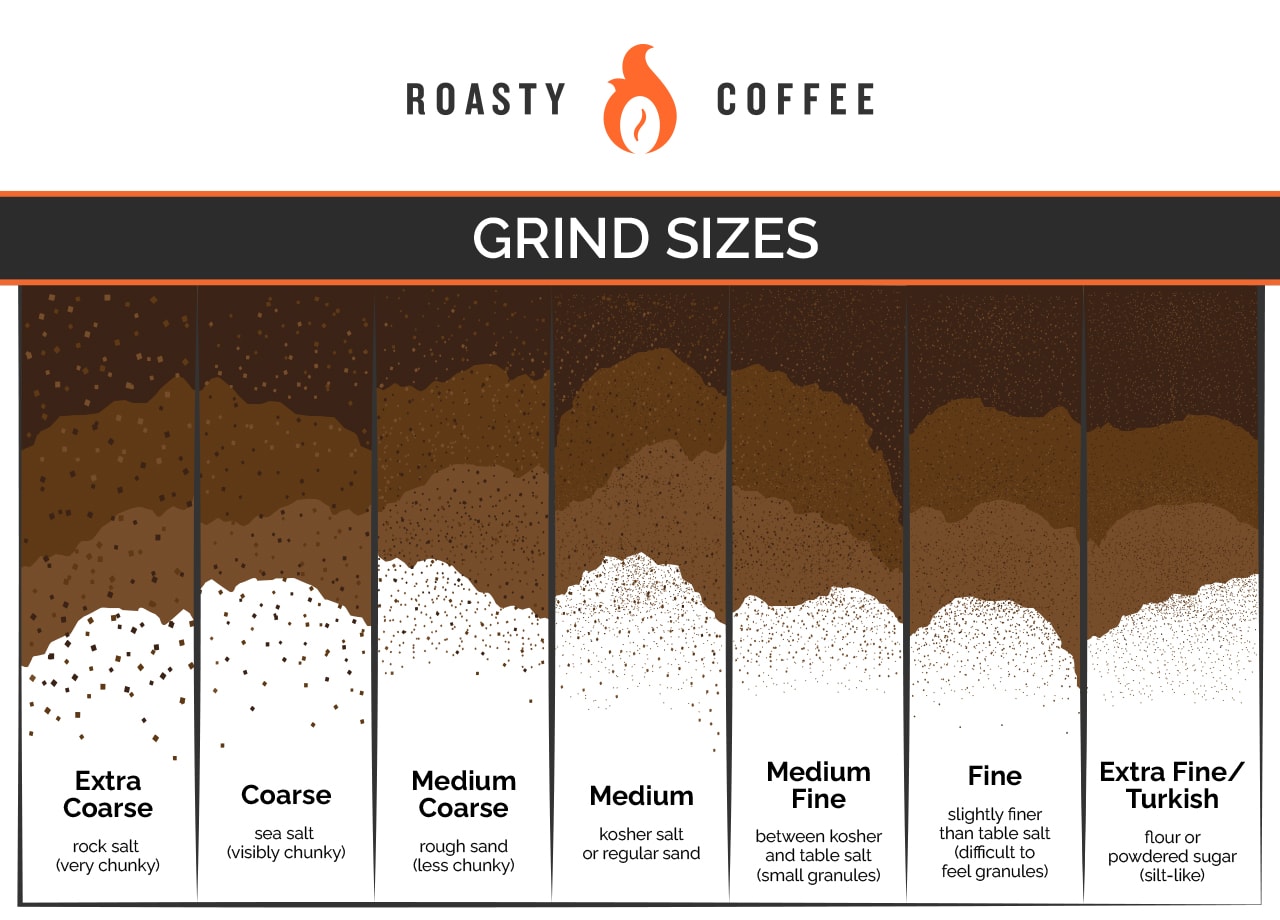
One of the most significant issues people face when seeking a coarser grind is knowing exactly what they need. While you might know the terms you should look for on a label — “coarse grind” or “extra-coarse grind” — it also helps to understand how each of these kinds of coffee granules appears.
Though we’ve been doing this for a while, even your friendly neighborhood Roasty staff forgets what each grind size looks like from time to time. Here’s a quick guide we reference when that happens:
- Extra Coarse: rock salt (very chunky)
- Coarse: sea salt (visibly chunky)
- Medium-Coarse: rough sand (less chunky)
- Medium: kosher salt or regular sand
- Medium-Fine: between kosher and table salt (small granules)
- Fine: slightly finer than table salt (difficult to feel granules)
- Extra Fine/Turkish: flour or powdered sugar (silt-like)
Of the three coarse ground coffee options, medium-coarse is the easiest to achieve with even the most basic, entry-level burr grinders. On the other hand, extra coarse tends to be somewhat inconsistent unless you have a more specialized grinding tool on hand.
Quick Summary: Best Coarse Ground Coffee
 | Our Top Choice Stone Street Cold Brew Reserve Colombian |
| Check on Amazon → |
 | GEVALIA SPECIAL RESERVE GUATEMALA COFFEE |
| Check on Amazon → |
 | CAFÉ DU MONDE COFFEE AND CHICORY |
| Check on Amazon → |
 | STONE COLD JO COLD BREW BLEND |
| Check on Amazon → |
 | PRIMOS FRENCH PRESS SPECIALTY COFFEE |
| Check on Amazon → |
 | BIZZY ORGANIC SWEET AND SMOOTH COLD BREW |
| Check on Amazon → |
Our Favorite Coarse Ground Coffee Brands
A big issue we and many of our fellow coffee freaks run into when it comes to coarse ground coffee is finding a good pre-ground option. We know, we know — pre-ground isn’t necessarily ideal when it comes to freshness and filling your cup with strong, rich flavors. Still, it’s convenient for those of us brewing on a budget or who don’t have any extra time in our morning coffee routines to pull out the old grinder.
Besides, getting a consistently sized grind on your own can be a bit of a hassle if you don’t have the right kit, so many people opt to skip out on grinding whole bean coffee and go the pre-ground route just to avoid a headache.
No matter your reasons for relying on pre-ground joe, we think you’ll appreciate our coarse ground coffee suggestions. They’re all excellent options that keep you from having to compromise too much on flavor, so we’re confident that whatever you pick will satisfy your needs.
Note: If you need coarse ground joe specifically for cold brewing, we recommend checking out our article on the best coffees for use in cold brew coffee makers here. That list is full of products, ranging from light to dark beans, whose smooth, delicious coffee flavors steal the show when served cold.
Stone Street Cold Brew Reserve Colombian
First up is a Colombian Supremo single-origin coffee from Stone Street Coffee. While they explicitly market these beans for cold brew, they’re some of our favorites for French press brewing, too.
These dark roast coffee beans are 100 percent arabica, and their coarse grind is pleasantly consistent — perfect for slow extraction. With low acidity and a slightly sweet flavor, you’ll find that this brew is both bold and well-balanced.
Gevalia Special Reserve Guatemala Coffee
Next up on our list of coarse joe recommendations is a delicious single-origin coffee from the popular Swedish coffee company Gevalia.
Only high-quality 100 percent arabica beans hail from the high altitudes of Guatemala. You’ll notice that a cup of this medium-bodied, medium roasted brew has a powerful aroma and smoky, cocoa-filled notes that are sure to perk you right up in the morning.
Café Du Monde Coffee and Chicory
If you’ve ever found yourself in the Big Easy, you probably found yourself at one of Café Du Monde‘s locations, sipping a café au lait made from the shop’s signature coffee and chicory blend. Hot milk really brings out the chocolatey notes of this rich, full-bodied brew, but black coffee lovers can enjoy it, too, as the chicory cuts some of its bitterness.
These coarse grounds come in a large, yellow can, giving the product a classic and homey look while effectively preserving your pre-ground coffee’s freshness.
Stone Cold Jo Cold Brew Blend
Stone Cold Jo‘s Cold Brew Blend is an affordable, high-quality coffee option for those looking for a good pre-ground coarse joe. Since you’re reading this article, we’re assuming you fall into that category! It’s a smooth, low acidity dark roast — precisely what you want when using the cold brew process — that’s USDA-certified organic, Fair Trade certified, and kosher friendly.
These 100 percent arabica beans are directly sourced before undergoing an artisanal roasting process, and when brewed, produce a cup filled with hints of toffee, caramel, chocolate, and grape. Sounds refreshing, doesn’t it?
Primos French Press Specialty Coffee
If you’re searching for something a bit more citrusy to use in your French press, these medium roasted coffee beans from Primos Coffee Co. just may be right up your alley.
These beans are grown on a fourth-generation family farm in Nicaragua, where they’re produced sustainably and responsibly to preserve the country’s natural resources. This joe is low acid and smooth, pairing citrus flavors with a medium roast for those of you who like to keep your brew a bit lighter.
Bizzy Organic Sweet and Smooth Cold Brew
Last but certainly not least is an offering from Bizzy Coffee. Though this coarse grind joe is more suited for making cold brew coffee beverages, you can do a bit of experimenting with your French press or drip brewer to enjoy it hot, too.
These medium roast beans are sourced from Central and South America, and they’re produced sustainably by the area’s local farmers. Use this grind to brew yourself a smooth and sweet cup that’s packed with notes of caramel and hazelnut — just delicious!
Get Your Grind On At Home
Now, any of the above pre-ground coarse coffee beans will do just fine to produce a delicious cup of java. Grinding your beans shortly before you brew is the best way to enjoy the most flavorful coffee.
You will need a pretty good burr grinder to get a coarse grind; a blade grinder just won’t cut it. Well, it will, but just not very evenly. For the best extraction, you’ll need a nice and even grind so the water can work through the granules at the same rate. While a blade grinder is better for your budget, it just can’t give you the consistency you need.
If you want recommendations for the best coffee grinders to meet your coarse coffee needs, check out this article!
Of “Coarse,” We’ll Answer Your Questions!
Is Starbucks ground coffee coarse?
Technically, no. The Starbucks brand joe on the shelf at the local grocery store is not coarsely ground.
Starbucks Coffee’s pre-ground beans are a universal grind size, which means they’re fit to work with pretty much any drip brewing method, from electric drip coffee brewers to the trusty French press to the classic pour-over.
However, the brand can grind your whole beans to coarse coffee perfection in each of its coffee shops. Just pick up a bag of joe from a Starbucks location near you and ask the barista to grind it for you.
How long does coarse ground coffee last?
All of your freshly ground joe, when stored properly in an airtight canister in a cool, dry place, can last for about one to two weeks.
Of course, we’re not saying you have to toss your ground coffee into the garbage as soon as 14 days have passed; you can still brew it after that date. But, if you want to be sure the resulting cup of coffee is as fresh and flavorful as possible, we recommend brewing it all within that time frame.
Can you use coarse ground coffee in a drip coffee maker?
While there are some things you can be a bit more casual about when it comes to brewing your joe, the fineness or coarseness of your coffee grounds usually isn’t one of them. Most drip coffee makers are designed to brew medium-sized coffee beans, so stick to those and steer clear of the coarser options.
Which is stronger, fine or coarse ground coffee?
If the strength to which you’re referring mostly has to do with your brew’s flavor, then finely ground joe has a heavier extraction than its coarse counterpart, which allows more of your beans’ flavor to come through in your brew.
The exception to this, however, occurs when an immersion-style brewer is used. Because the longer steeping time allows for all of the beans’ flavors to make it into the finished brew, this joe tends to be more flavorful than something brewed from fine grounds.
Find Your Grind
Hopefully, now you’ve got a bit more understanding of why certain brewing methods call for coarse grounds and how you can achieve that grind size at home. We’ve covered everything, from answering the question of why grind size matters to which brands carry our favorite coarse joe, and now it’s time for you to put your new knowledge to the test.
Get to brewing, and let us know which coarse ground coffee you like best! And the next time you’re searching for a new bag of beans to use in your French press or cold brew maker, you’ll think twice before grabbing the first batch of medium (or even worse…FINE) coffee grounds you see on the grocery store shelf.
Happy Caffeinating!








